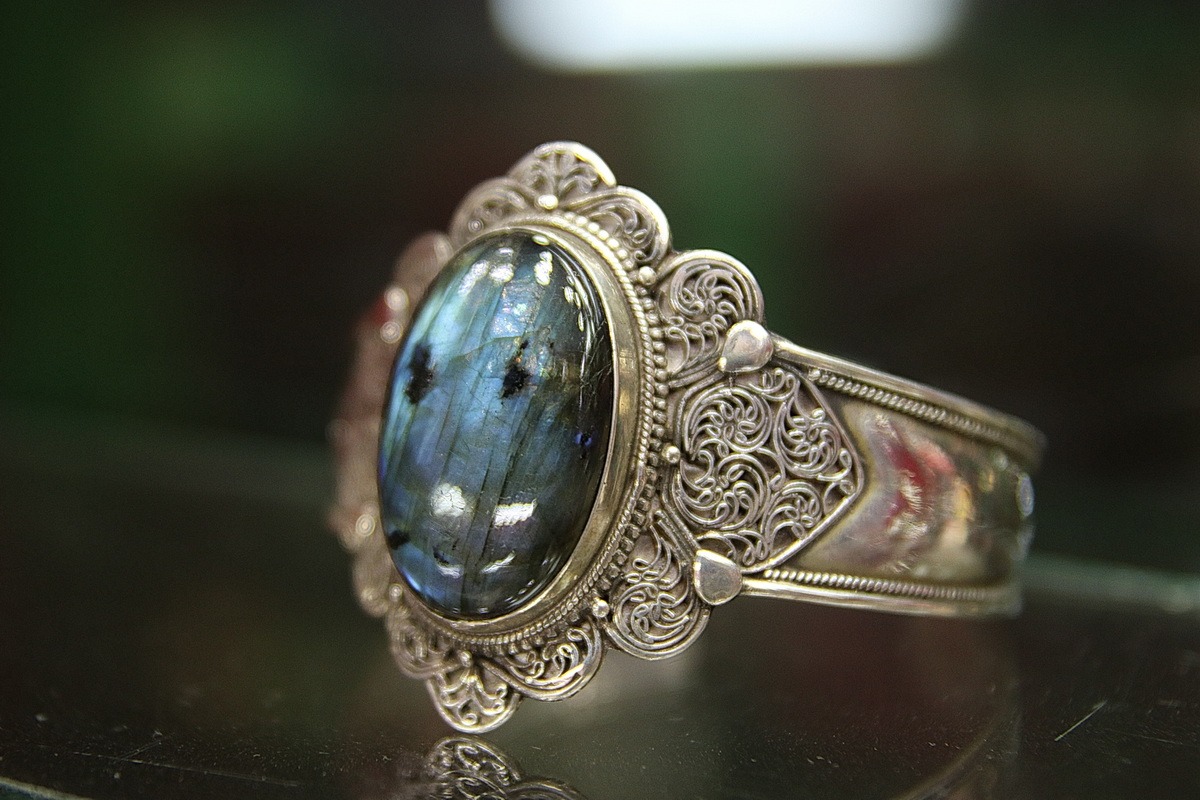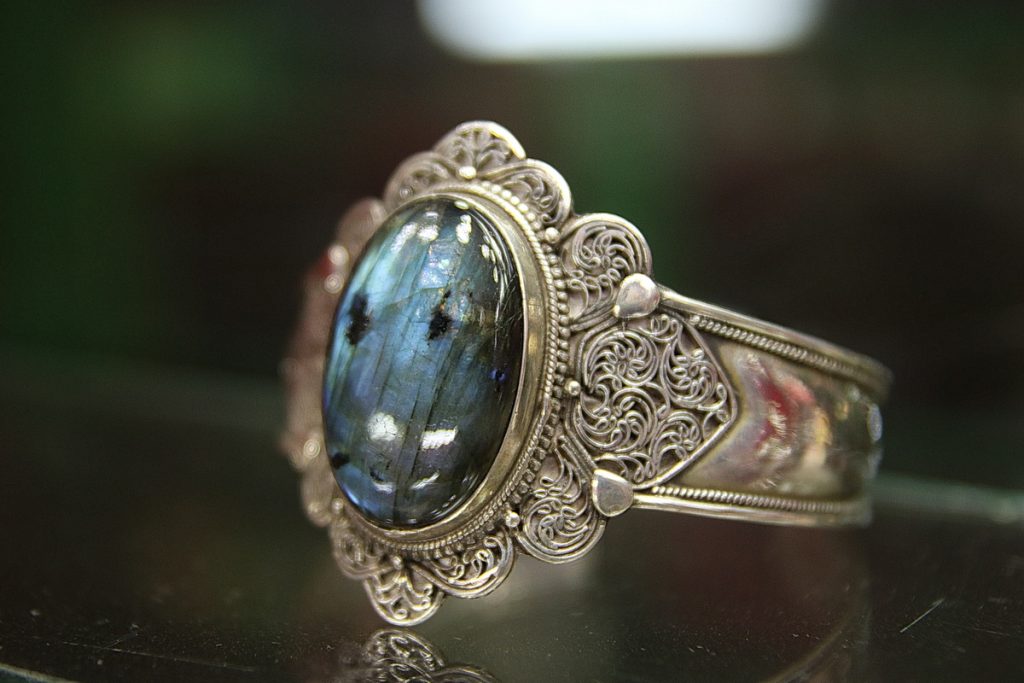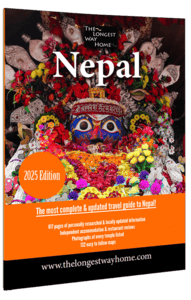

How finding great silver and silver jewelery became easy in Kathmandu
Despite not having any silver mines or production it’s quite amazing to see how many silver and silver based jewelry shops there are around Kathmandu. Why is that? It’s not really something I wondered about as subconsciously it was something that “just” made sense. Art, artisans and trading routes. These things are traditionally all over the Kathmandu Valley.

Decorative ornaments cover nearly every temple. These traditional ornaments then make their way in smaller forms to silver bracelets, earrings, rings and so forth. I’ve bought some keepsakes which I do in most countries I travel to.
Over the years things have changed as while traditional Nepali style silver jewellery is abundant, silversmiths have upped their game for modern tastes. Fusion silver blends of old and new now adorn many a Kathmandu jewelery shop window. It’s also possible to get custom silver jewelery made, and get easy repairs to your own collection.
Like silver? Nepal ranks top on this list of countries to visit.
Why is Kathmandu is a hidden gem for silver?
Notice I wrote Kathmandu and not Nepal? When the Malla (Newari) first arrived in the Kathmandu Valley in the 11th century they brought with them the arts, coinage, and a willingness to trade. Food, furs, spices, wool, Yaks, and salt were all being exported by the Newari to the north with Tibet and to the south with India. They traded these commodities for precious metals, and gems.

This is when we started to see the temples of the Kathmandu Valley richly decorated. Silver coins were produced. And the Kathmandu Valley become renown for its silversmiths. So much so that the Chinese, who traded in Silver ignots in the early 18th century, brought these heavy ignots via Tibet to Nepal so they could be turned into easier to handle coin. New found wealth flowed into Kathmandu. It didn’t take long for those enterprising silversmiths making the coins in Nepal to begin mixing the coins with other metals which reduced the silver content in the coins to 50%. The remaining silver stayed in the Kathmandu Valley.
With word of mouth spreading about the the great silversmiths of the Kathmandu Valley trade expanded deeper into India and even to Thailand. It also kickstarted great silver smuggling routes that still exist today. While gold may garner most of the smuggling news in Nepal, it’s silver which continues to slip by relatively unnoticed. With a constant flow of silver, silversmiths continue producing high quality jewelery and ornaments, across the Kathmandu Valley.
Finding good quality silver and silver shops in Kathmandu
There’s an abundance of silver shops around Kathmandu city and Patan in particular. These were and still are the main areas that silversmiths work. It’s important to note that silver plating is not that popular in Nepal mainly due to the lack of modern machinery. Likewise, forget about the cheap Chinese fake silver jewelery that proliferates around the world with its bright shiny designs. This has now also entered Kathmandu in the shopping centres and malls but not so much in the traditional shops. In Kathmandu expect to find traditional pure silver in local dedicated silvershops. International silver purity levels of 999 (fine), 925 (sterling – most popular in Nepal), coin silver, and indeed a bevy of Asian marked silver are all in operation in Kathmandu. However, disreputable silver stores also exist who will outright re stamp their silver.

If spending a lot of money on silver you may already be aware of silver tests like neodymium magnets, ice melts, and sound tests to see if you are getting genuine silver. However many of these are not practical in a jewelery store. The high-end stores along Durbar Marg are not likely to let you bounce a ruby encrusted silver bracelet off the floor so you hear a high pitched tone. Instead they will show you several certificates from Nepali silver organizations including the Federation of Nepal Gold and Silver Dealers Association https://fenegosida.org. While there’s still nothing stopping the shop from making alterations, this is about the best Nepal has to offer.
For the average person looking for nice silver the best test is that of local reputation and indeed heritage. For tourists this presents the problem of not knowing anyone. Your friendly trekking guide or hotel owners don’t count! It all comes down to knowing the right people, who have lived in the Kathmandu Valley for generations. Traditionally silversmiths are all Newari which is another major clue in what to look out for. Many will have their own workshops, and repair shops where you can see them carry out work. Finding a good quality silver shop in Kathmandu embodies all of the above. Newari, family owned silver shop, and family run silversmiths working in the shops.
Popular types of silver to buy in Nepal
These days there are several types of silver to be on the lookout for in Nepal.

Silver jewellery. Silver ornaments (including household). Silver coins (rare). Silver religious objects. There’s also a mix of silver plaques etc. However, the one type of “silver” to avoid? Cheap Chinese (fake) imported jewellery- you’ll usually see this in everyday markets, shopping malls or places selling cheap shiny jewelry.
Most semi precious gemstones come from India. Silver, itself is sold by weight in Nepal – so don’t be surprised to see a jeweler weigh out your ring or earring before giving you a price!
Popular types of silver jewelery to buy in Nepal
Silver Earrings

Most silversmiths in Kathmandu will have trays upon trays of small and medium sized silver earrings on offer. Styles vary from small loops, to larger loops, and twisting designs. Local styles may have cultural symbols or lettering. Semi-precious gems are another style.
Silver pendants

Many silver pendants and necklaces in Nepal have intricate images of Nepali gods on them, the Buddha, or are larger more modern designs. Similarly you can get semi-precious stones placed on pendants. Many people can ask for birthstones or favorite gemstones to be placed on silver pendants.
Silver rings

Perhaps the most popular silver jewelry in Nepal are silver rings. Some are large and lavish with large gemstones or faces of various deities. While others are smaller with intricate designs etched into them. From expensive antique silver rings with large stones cast into them, to smaller more modern colorful rings with semi precious stones there are literally hundreds to choose from.
Getting the best silver jewellery from the Shakya silversmith brothers in Kathmandu

I learned a lot about silver in Nepal form Ashok and Gautam Shakya who have a small silver shop in Kathmandu along with a larger workshop in Patan.

They are Newari and silversmiths have been in their families for generations. Their shop was opened by their father and has been in Thamel for over 50 years. They sell silver as far away as Switzerland and deal only in sterling silver (925). They don’t mix silver with cheaper metals either and they also offer a silver repair service.
Everything inside the store, they’ve made themselves. Earrings, necklaces, rings, and even ornamental household objects were all crafted by the brothers. While living in Patan they’ve kept the little store their father opened in Thamel as their main trading hub. They alternate days and you will often find either the ever smiling Ashok or his diligent brother Gataum working inside.
Where to find the silversmith brothers of Kathmandu?

Ashok and Gautum Shakya run Himalayan Collection (silversmiths), along Thamel Marg ( just south of Narshing Chowk in Thamel, opposite the Sandwich Point).
Tel: +977 – 142 581 65
They usually open after 10am and close around 4pm.
If you visit them, mention my name and you might just get to see some special designs and an insight into silver jewelery in Kathmandu.
Get my Guidebook to Nepal & discover more than anyone else!
Looking for more insider tips and information like this? Get the most up-to-date, popular and dedicated guidebook to Nepal in the world. Over 617 pages & 984+ photographs of every temple listed, daily guides on all the treks listed and so much more.
Take a look below and you’ll find out why this beats all other guidebooks!

